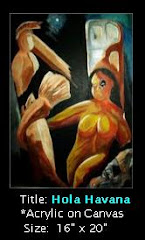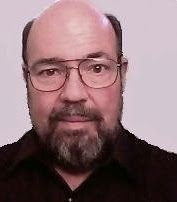
Juvenile adventure television series were a staple of 1950s television, with shows like Sergeant Preston, Sky King, and Tom Corbett taking their audiences from the Yukon territory, to the cockpit of a soaring Cessna T-50 `Bamboo Bomber’, to the far reaches of the asteroid belt.
For 30 minutes (minus commercials) these shows would transport kids of all ages to exotic locales, where adventure awaited and despite any adversity, the good guys always won.
One of the best remembered shows of my childhood was a syndicated adventure series staring Jon Hall, called Ramar of the Jungle.
For this all-American youth of the 1950s a scientist-doctor who lived and worked in the jungle, carried a rifle, and always saved the day . . . well, that was a hard combination to beat.
The series consisted of 4 13-episode blocks. With the 1st, 3rd, and 4th blocks taking place in `Africa’ and the 2nd series in `India’.
In reality, they were really shot on the back lot in Hollywood, with cheap sets, dubious looking `natives’, and stock jungle footage liberally spliced into each episode. The same jungle scenes had a habit of showing up repeatedly week after week, but then, it wasn’t supposed to be a documentary.
Each of the 4 season’s had a 3-part story arc, that allowed the producers to repackage these episodes into four separate feature films. Another seven `TV movies’ were stitched together for syndication as well, long after the series ended.
The show starred Jon Hall – an actor who first appeared in movies in 1935, but didn’t really gain attention until the 1937 movie The Hurricane, with Dorothy Lamour.
He worked steadily throughout the 1940s playing the lead in lightweight escapist adventures like Arabian Nights (1942), White Savage (1943), Ali Baba and the Forty Thieves (1944), Cobra Woman (1944), and Prince of Thieves (1949).
Hall was married for 20 years to the beautiful and talented songstress Frances Langford, who played opposite Don Ameche in The Bickersons. They divorced in 1955, but remained friends until Hall’s death in 1979.
While able to find work in B movies, Hall – like many of the B-list stars of the time – moved to television in the 1950s. He played Dr. Tom 'Ramar' Reynolds in 52 episodes of Ramar of the Jungle between 1952 and 1954.
Hall’s career languished post-Ramar, with few roles offered, and ended with the ultra-low budget horror film The Beach Girls and the Monster in 1965.
It is a testament to just how long Ramar ran in syndication that I remember it vividly playing on Saturday afternoon television as much as a decade after filming ended.
Hall’s co-star was Ray Montgomery, a contract player with Warner Bros. in the 1940s who appeared in mostly minor roles. Handsome, and a capable enough actor, there wasn’t anything that set him apart from the crowd.
Unlike Hall, however, Montgomery managed to stay active in show business throughout the 1960s and into the 70’s and 80’s, playing guest roles in shows like 77 Sunset Strip, Hawaiian Eye, The Virginian, and Lassie.
The third member of the cast was Nick Stewart, who played a native guide named Willy-WIlly.
Despite third billing, Stewart actually had a longer (and better) resume than either of his two co-stars. He’d started out as a dancer at the Cotton Club, moved to Broadway in the 1930s, and appeared in the movies (bit roles) as early as 1932.
Most famously, he’d played Lightnin' (as Nick O'Demus) on the the TV version of the Amos & Andy Show.
Stewart and his wife Edna Stewart founded the Los Angeles' Ebony Showcase Theatre, which worked to give black actors roles beyond the traditional maid and porter stereotypes.
We’ve 5 episodes of Ramar for you to sample from the Internet Archive.
Ramar of the Jungle - Evil Trek
Ramar of the Jungle - Season 1, Episode 1
Ramar of the Jungle - White Savages
Ramar of the Jungle - Season 1, Episode 2
Ramar of the Jungle - Drums of Africa
Ramar of the Jungle | Season 1, Episode 3
Ramar of the Jungle - The Doomed Safari
Ramar of the Jungle | Season 1, Episode 4
Ramar of the Jungle - Tribal Feud
Ramar of the Jungle | Season 1, Episode 5
Jon Hall died at his own hands in 1979 while in the final stages of terminal cancer. Upon retirement from show business, Ray Montgomery successfully transitioned into California Real Estate.
Nick Stewart passed away in 2000, but along the way his Ebony Showcase Theatre helped launch many careers,including those of such noted performers as Nichelle Nichols, John Amos, and Isabel Sanford.
Not a bad legacy. Not bad at all.














